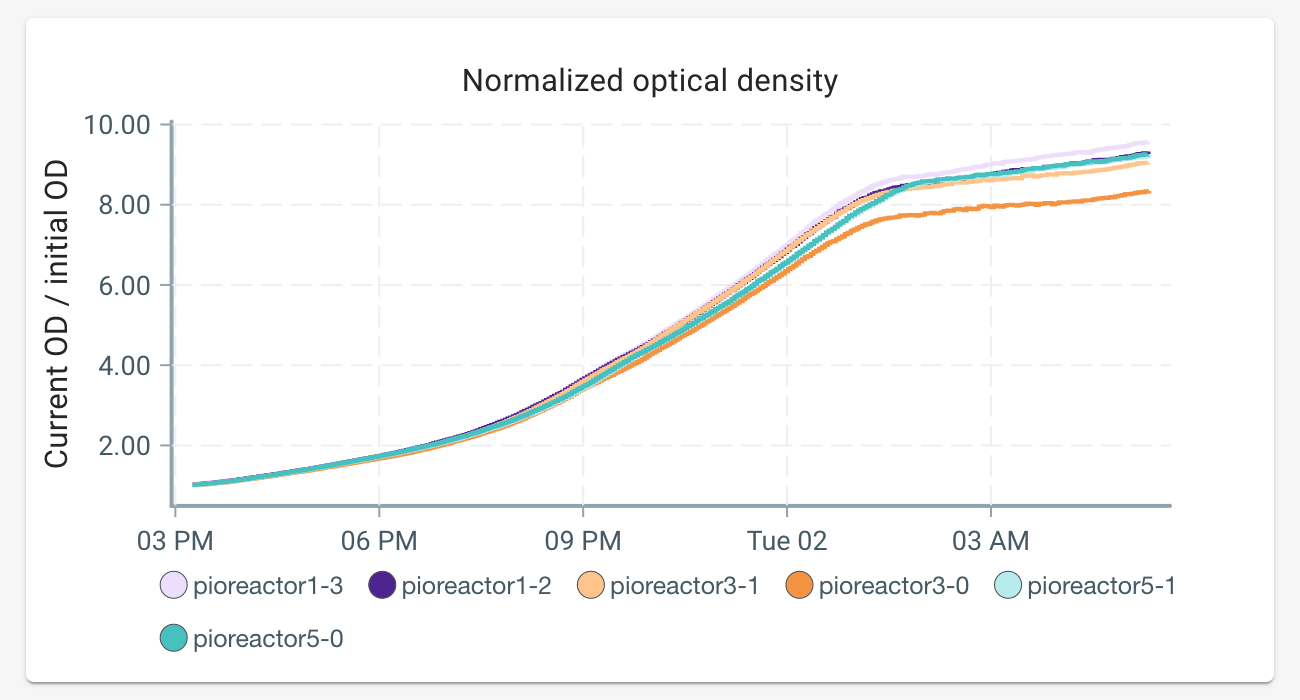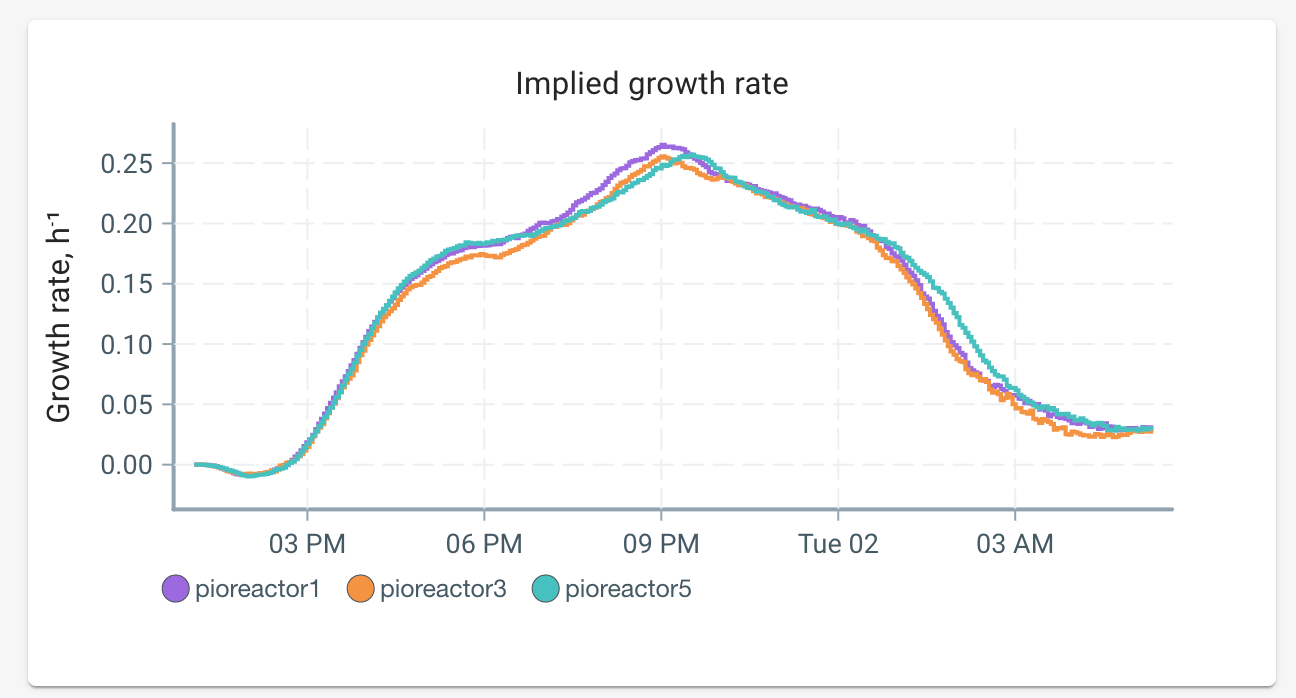Replication, variance, (and growth rates) in Pioreactors
One important property we wanted Pioreactors to have was low variance between units. That is, one Pioreactor should be interchangeable with another. This property means that differences in experiment results are solely the result of biological culture conditions, and not on the Pioreactor construction or materials. In fact, we take inspiration from cloud computing providers: the customer shouldn't have to worry about which hardware they are running on, and the cloud provider can swap out hardware without the customer noticing.
Low variance between Pioreactor is accomplished through hardware and software design. The hardware is designed such that outputs, like LEDs, try to be as consistent as possible. However, there are things that will always be out of our control: imperfections in the glass vial, variation in commodity hardware components, slight misalignment of LEDs, etc. To help fix these problems, our software performs normalization tasks that try to control for variations. After all this, we are really happy with how consistent the Pioreactors are!
As an at-home test, we prepared a very simple YPD broth, let cool, added a small amount of Baker's yeast and gently stirred. We added about 12ml of the broth to three Pioreactors and let it grow for ~18h. We expected to see very similar growth behaviour between all three Pioreactors since the cultures were identical. Below are the results of the optical density (our measure of culture size):

Each Pioreactor had two sensors, hence the six lines. We can see a high alignment between Pioreactors - each growing at similar rates (we'll see this is more detail later), and each hitting the growth plateau at a remarkably close time (this is when the glucose was exhausted).
The above graph is tracking optical density, but Pioreactors go one step further and infer a real-time growth rate as well. This is very useful, as growth rate is not constant over time, and varies quite a bit. And knowing the growth rate is key. In fact, understanding and controlling growth are fundamental to understanding and controlling microbes:
The study of the growth of bacterial cultures does not constitute a specialized subject or branch of research: it is the basic method of Microbiology.
- Jacques Monod, 1949, biochemist and later Nobel Prize winner
Aside: a goal of Pioreactor is to make growth rates as accessible as possible. You don't need a degree in biochemistry or statistics - we make it a basic method for you.
Below is the growth rate for our three cultures:

First thing to notice: we again see excellent alignment of growth rates. There is little variance in the three cultures. Next thing to notice are the subtleties in growth rate! The growth rates increase and plateau, increase again, fall, etc. These changes are not at all obvious when looking at the optical density alone. I hope Monod would be happy to see such highly detailed, and consistent, growth curves. Only 70 years later!
Pioreactor will only get better from here, and we expect more and more variation to be controlled, either in hardware or software. You, the curious biologist, get the benefits, and a new tool in your toolbelt.

